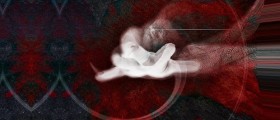
Temporal Lobe Epilepsy
All epilepsies may be classified into generalized-onset epilepsies and partial-onset epilepsies. Temporal lobe epilepsy is a form of focal or partial-onset epilepsy that features with recurrent seizures. It is the most frequent refractory epilepsy. Seizures in temporal lobe epilepsy originate from abnormal electrical discharge which is created in one or both temporal lobes. Further division of temporal lobe epilepsy includes medial temporal lobe epilepsy and lateral temporal lobe epilepsy. In medial temporal lobe epilepsy the seizures originate from hippocampus, parahippocampal gyrus and amygdala while in lateral temporal lobe epilepsy seizures originate from the neocortex on the external surface of the temporal lobe.
There are numerous causes of temporal lobe epilepsy. It may occur due to injury, develop as a consequence of infection (meningitis, encephalitis) or result from brain tumors, vascular malformations and developmental abnormalities.
Symptoms of Temporal Lobe Epilepsy
The leading characteristic of temporal lobe epilepsy are partial seizures. They include rhythmic muscle contractions and abnormal movements as well as atypical sensations. Aura, which is a neurological introduction to seizures, may precede the attack. Still, it does not affect all the patients. Even though temporal lobe epilepsy belongs to a group of partial epilepsies in certain number of patients local seizures may progress to generalized affecting the whole brain.
Focal temporal lobe epilepsy may occur in people who are suffering from mesial temporal sclerosis. Patients usually complain about odd sensations, their behavior and emotions obviously change and they suffer from muscle spasms and/or convulsions. Focal seizures may sometimes develop and turn into generalized causing loss of consciousness.
Diagnosis of Temporal Lobe Epilepsy
The diagnosis of temporal lobe epilepsy can be easily set after electroencephalogram, video-EEG telemetry, CT of the brain, MRI, PET or SPECT have been performed. EEG will show abnormal function and increased electrical activity while imaging methods such as CT or MRI help in visualization of certain abnormalities which may have caused epilepsy.
Surgical Treatment for Temporal Lobe Epilepsy
Some patients may respond to medications such as anticonvulsants. However, majority of them undergo surgery. Since, the seizures are localized on one specific area of the brain, the temporal lobe, patients can be successfully treated by temporal lobectomy. Temporal lobectomy is a surgical procedure in which the temporal lobe of the brain is removed.
Temporal lobectomy is highly successful operation and it carries low risk of complications. Some doctors are against temporal lobectomy since it can lead to certain changes such as loss of memory, problems with vision and emotional changes. Still, thanks to a battery of neurological tests the risk is minimized and most patients suffer from no complications at all.

















Your thoughts on this
Loading...